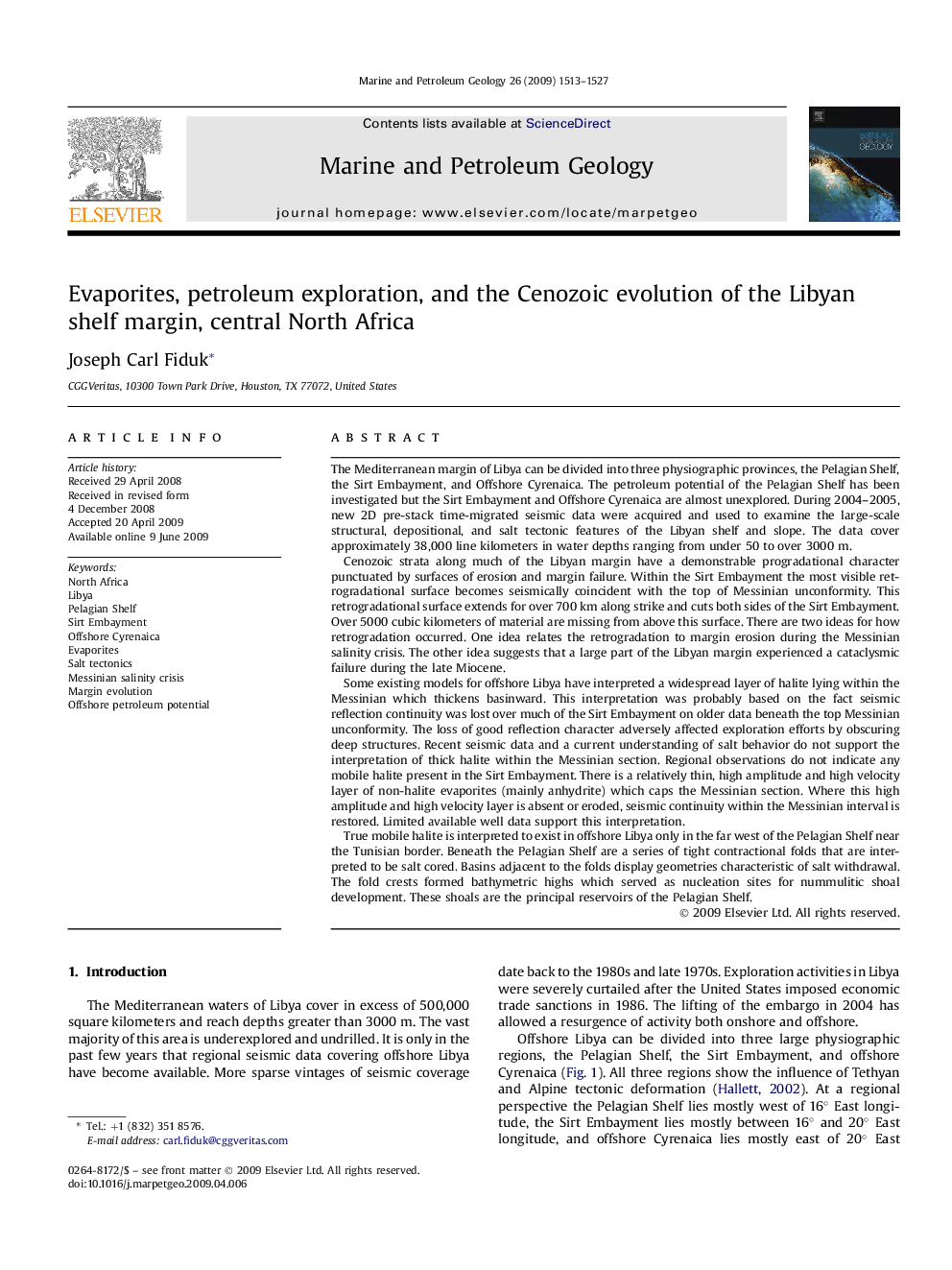| کد مقاله | کد نشریه | سال انتشار | مقاله انگلیسی | نسخه تمام متن |
|---|---|---|---|---|
| 4696566 | 1351687 | 2009 | 15 صفحه PDF | دانلود رایگان |

The Mediterranean margin of Libya can be divided into three physiographic provinces, the Pelagian Shelf, the Sirt Embayment, and Offshore Cyrenaica. The petroleum potential of the Pelagian Shelf has been investigated but the Sirt Embayment and Offshore Cyrenaica are almost unexplored. During 2004–2005, new 2D pre-stack time-migrated seismic data were acquired and used to examine the large-scale structural, depositional, and salt tectonic features of the Libyan shelf and slope. The data cover approximately 38,000 line kilometers in water depths ranging from under 50 to over 3000 m.Cenozoic strata along much of the Libyan margin have a demonstrable progradational character punctuated by surfaces of erosion and margin failure. Within the Sirt Embayment the most visible retrogradational surface becomes seismically coincident with the top of Messinian unconformity. This retrogradational surface extends for over 700 km along strike and cuts both sides of the Sirt Embayment. Over 5000 cubic kilometers of material are missing from above this surface. There are two ideas for how retrogradation occurred. One idea relates the retrogradation to margin erosion during the Messinian salinity crisis. The other idea suggests that a large part of the Libyan margin experienced a cataclysmic failure during the late Miocene.Some existing models for offshore Libya have interpreted a widespread layer of halite lying within the Messinian which thickens basinward. This interpretation was probably based on the fact seismic reflection continuity was lost over much of the Sirt Embayment on older data beneath the top Messinian unconformity. The loss of good reflection character adversely affected exploration efforts by obscuring deep structures. Recent seismic data and a current understanding of salt behavior do not support the interpretation of thick halite within the Messinian section. Regional observations do not indicate any mobile halite present in the Sirt Embayment. There is a relatively thin, high amplitude and high velocity layer of non-halite evaporites (mainly anhydrite) which caps the Messinian section. Where this high amplitude and high velocity layer is absent or eroded, seismic continuity within the Messinian interval is restored. Limited available well data support this interpretation.True mobile halite is interpreted to exist in offshore Libya only in the far west of the Pelagian Shelf near the Tunisian border. Beneath the Pelagian Shelf are a series of tight contractional folds that are interpreted to be salt cored. Basins adjacent to the folds display geometries characteristic of salt withdrawal. The fold crests formed bathymetric highs which served as nucleation sites for nummulitic shoal development. These shoals are the principal reservoirs of the Pelagian Shelf.
Journal: Marine and Petroleum Geology - Volume 26, Issue 8, September 2009, Pages 1513–1527